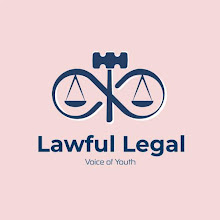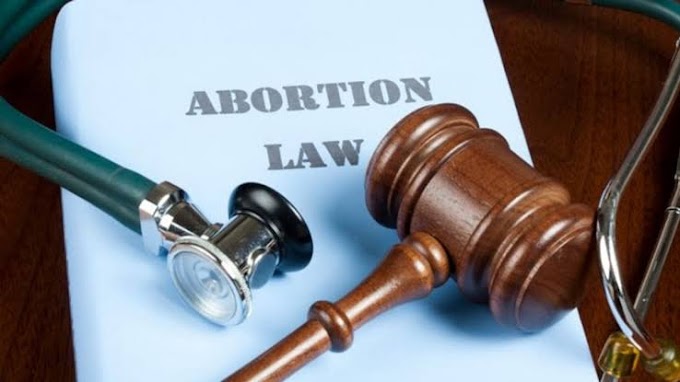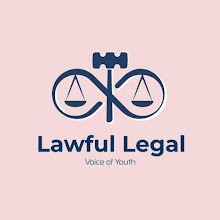The advent of the fourth generation of human rights
**Author:- Chhaya; B.A.LL.B Final year Saraswati institute of law
Human rights are often taken for granted in day to day life in the western world, as they are enshrined in law and policy. We often forget that Human rights have not always been guaranteed. In fact, what constitutes a ‘human right’ has been debated and changed over the last century several times. So have we got it all right? Are there other things that every human should be guaranteed access to under the law? Are we on the cusp of a new human rights revolution, one driven by technology, climate change and social development?
Article 1 of the UN Declaration of Human Rights, 1948 reads "All human beings are born free and equal in dignity and rights". But what are human rights? What is the relevance of the term "human" in human rights? Are these universal? Why do they matter and how did these rights evolve? What is the relevance of such claims in the 21st century?
According to Andrew Heywood, the author of several political textbooks like Politics, political ideologies and global Politics, Human Rights are rights to which people are entitled by virtue of being human, they are a modern and secular version of "natural rights". There are four characteristics to define human rights.
A Brief of History of human rights- The Universal Declaration of Human Rights turns 70 years old and continues to be the “international Magna Carta for all men everywhere”, as Eleanor Roosevelt, chair of the United Nations Human Rights Commission, once defined it.
However, before the widow of the former President of the United States presented the world with this document in 1948, there were prior treaties that recognized the need to give a single, equal status to all human beings.
The United Nations pinpoint the origin of Human Rights to the year 539 BC. When the troops of Cyrus the Great conquered Babylon, Cyrus freed the slaves, declared that all people had the right to choose their own religion, and established racial equality. These and other precepts were recorded on a baked-clay cylinder known as the Cyrus Cylinder, whose provisions served as inspiration for the first four Articles of the Universal Declaration of Human Rights.
Human Rights today in a globalized world- Human rights are no longer a national concern in a globalized world. Instead, they are more dependent on international and global actors and institutions, such as multinational companies and the media. Globalization has influenced the content, nature, and enforcement of human rights.
Human rights include the right to life and liberty, freedom from slavery and torture, freedom of opinion and expression, and the right to work and education. Everyone is entitled to these rights, without discrimination.
Human rights to globalization include the following rights:
International security
Trade across national borders
Non-partisan dispute settlement that is incorporated across borders
Free movement of persons across borders
To hold dual or multiple nationality
Globalization offers great opportunities, but its benefits are very unevenly shared. This affects the full enjoyment of all human rights, in particular in developing countries.
Human trafficking is currently one of the largest issues on a global scale. Millions of men, women, and children are forced into labor and sexual exploitation.
Fourth generation of human rights- The fourth generation of human rights includes rights that are linked to technological progress, such as digital or biological rights. These rights are still being studied and their legal features have not yet been completed. The fourth generation of human rights is focused on the rights that people should have in the digital age.
The fourth generation of human rights aims to protect human life in the face of technological innovation and new types of intelligence. One common example of a fourth generation human right is access to the internet. As more jobs and tasks require technology, a lack of access to the internet can put people at a disadvantage in their work and education.
The first three generations of human rights refer to humans as members of society, while the fourth generation refers to humans as a species.
Some of those analysts believe that the fourth generation is given by human rights in relation to new technologies, while others prefer to talk about digital rights, where a new range of rights would be found, such as:
The rights to equally access computing and digital
The rights to digital self- determination
The right to digital security
The right to access one’s own digital dataThe fourth generation of human rights includes emerging rights that are linked to technological progress, such as digital or biological. These rights are still under study and their legal features have not yet been completed.
Some examples of fourth generation human rights include:
Access to the internet
Protection against stress
The right to die
Environmental rights
Information rights
The right to nuclear safety
The fourth generation of human rights is related to the information revolution. Technology development has impacted how individuals can enjoy their natural human rights. For example, many jobs and tasks require some element of technology, so lack of access to technology can leave individuals at a serious disadvantage in their work and education.
The first generation of human rights consisted of negative rights, such as “freedom from”. The second generation of human rights included social, economic, and cultural rights.
The first generation of human rights is civil and political rights. The second generation of human rights includes economic, social and cultural rights and the third generation of human rights are called solidarity rights.




![Freedom of Speech in India [Indian Supreme court and Law of Sedition]](https://blogger.googleusercontent.com/img/a/AVvXsEiGLLUmLKq5Da6xDZplasOZHKRj-jOhWPkoeuy0_Eq757tUpOiHz-xooXwIlAjF0-hmBfi-TtMIv6on_sVgBXVq4wbWwnbsqLOcNX22S8C2aSq-ZuK3vn9wWAx8tXByYOBfwc0hs6b8RJV84YNFG2greouGKjup6g8kN-xVlchW33VHdSSmrhLC1BUEVbGp=w680)





